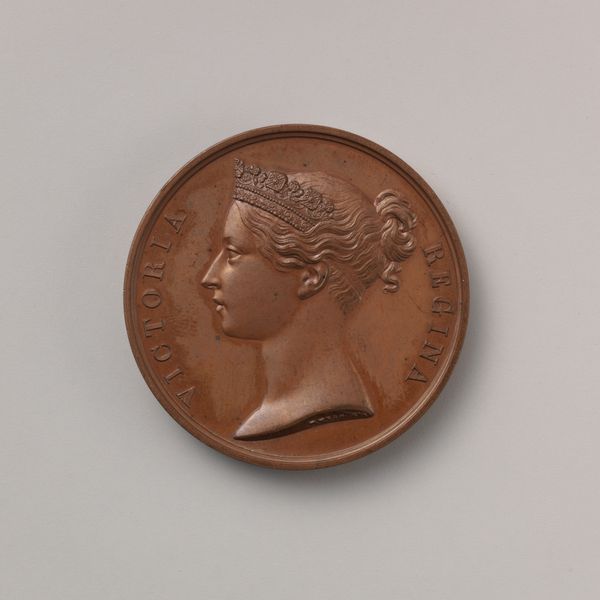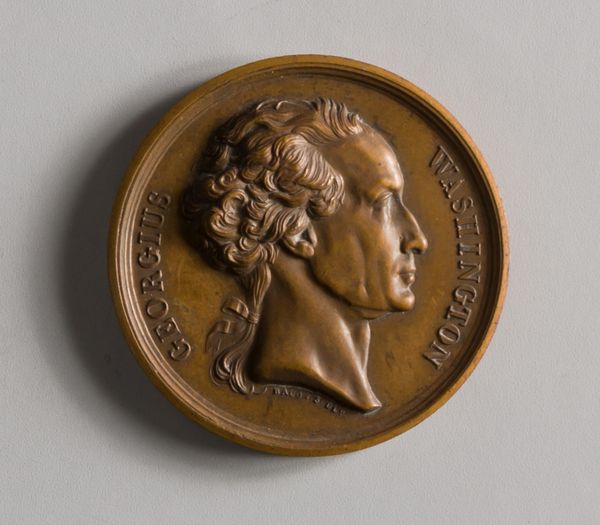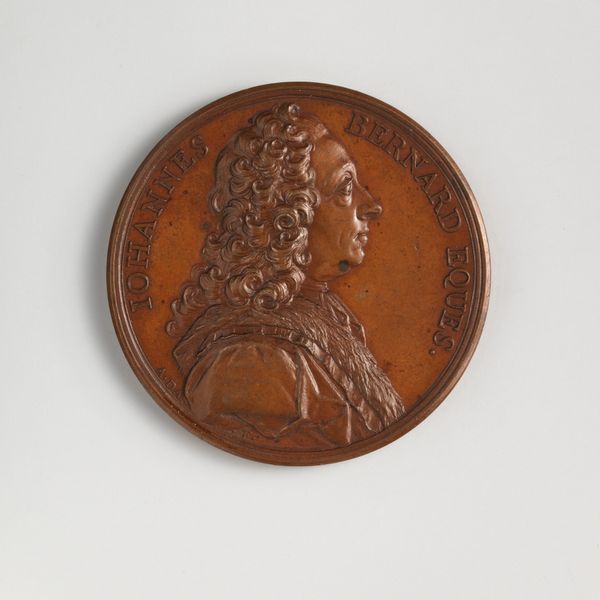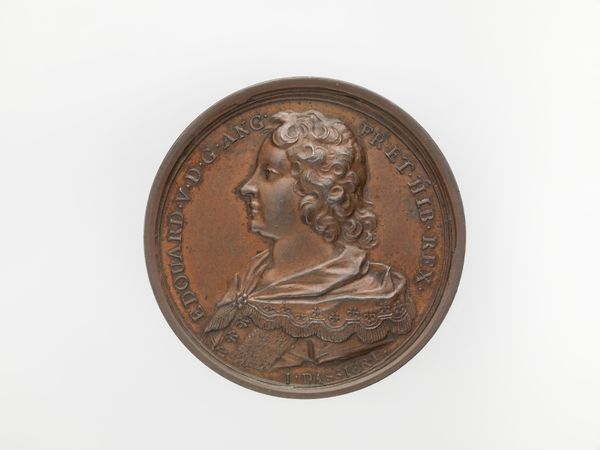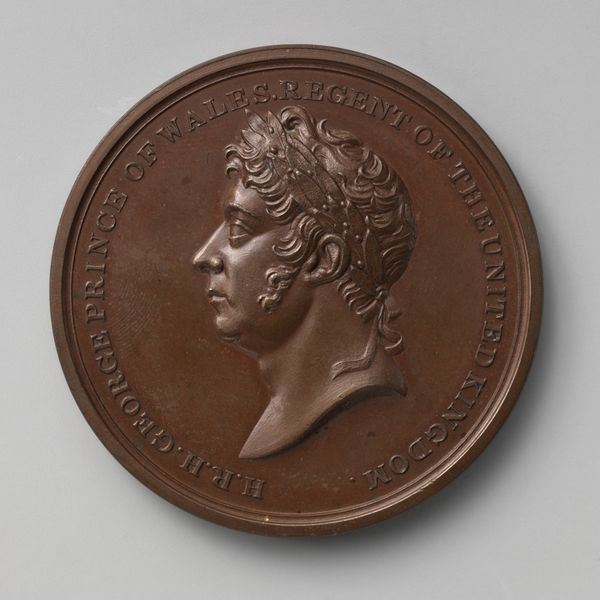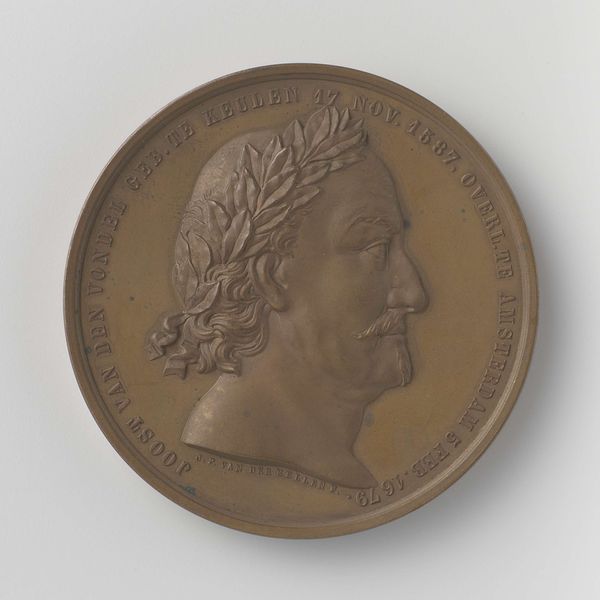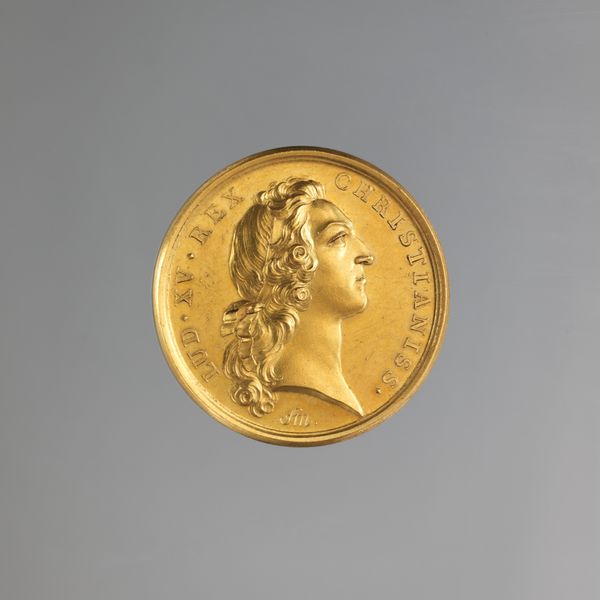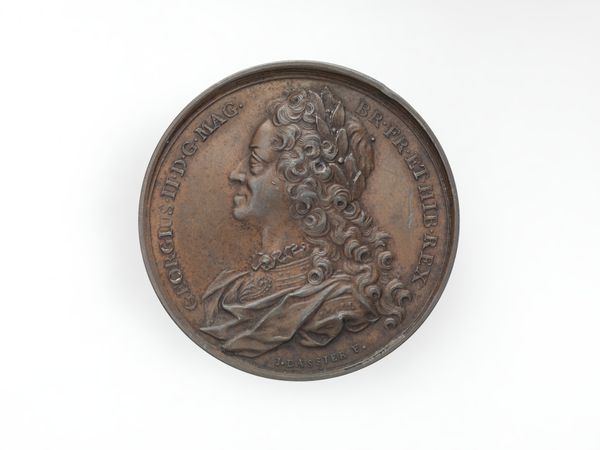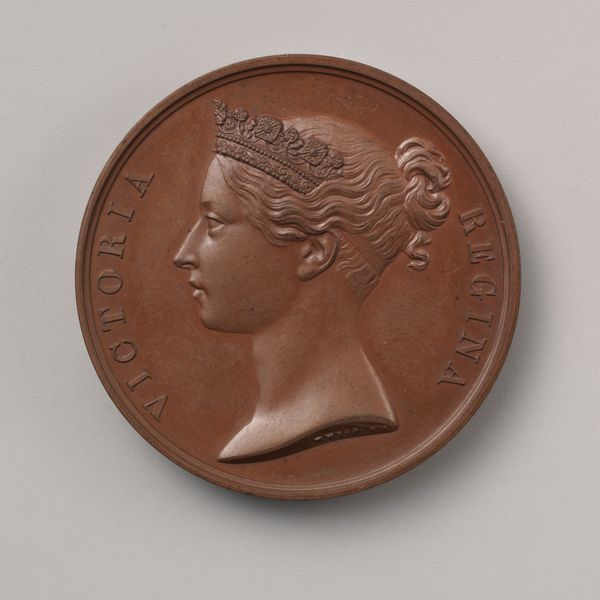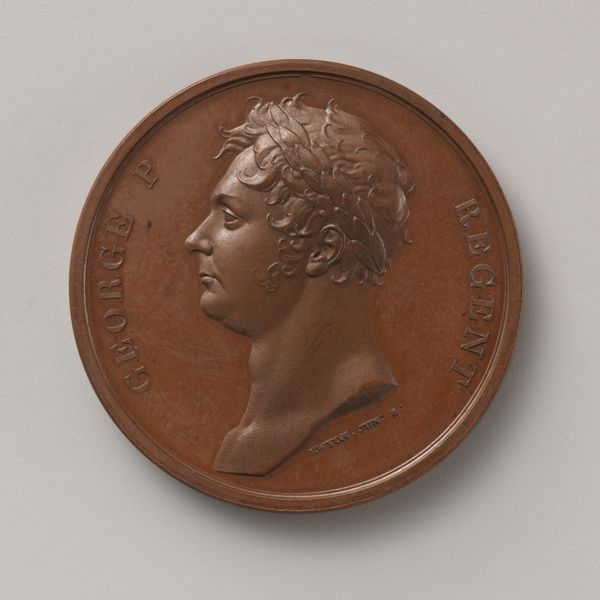
sculpture, terracotta
#
portrait
#
neoclacissism
#
sculpture
#
stoneware
#
sculpture
#
terracotta
#
decorative-art
Dimensions: Diameter (without frame): 6 1/8 in. (15.6 cm)
Copyright: Public Domain
Curator: What strikes me first is its restrained elegance; the ochre terracotta paired with that simple gilded frame. There's a coolness, a sort of formal distance. Editor: This terracotta sculpture is a portrait of Catherine II the Great, Empress of Russia, crafted in 1771 by Jean-Baptiste Nini. We can see the Russian influence of neoclassicism beginning to take root. But it also speaks to craft practices; Nini, who began his artistic career as a maker of earthenware, understood how clay could signify status. Curator: The profile is quite austere. The strong jawline, the controlled curls, it's clearly meant to convey power. It reminds me a bit of a Roman coin or a cameo. And I suppose that’s quite intentional. Editor: Indeed. Consider the production process; Nini was known for his skill in terracotta and stoneware. While a portrait in marble may have felt beyond reach, this choice of medium would make a statement. Catherine II sought to consolidate and cultivate power not just through conquest, but also through manufacture. Think of the growing middle class. They desired status and access, making a piece such as this desirable. Curator: The craftsmanship is undeniable. Look at the detail in her hair and the wreath. How are these forms defined using subtle modeling. You know, this also makes me consider the intended audience. I doubt it was designed for the common people. This has the touch of neoclassical elitism, doesn’t it? Editor: But Nini himself came from modest origins! It underscores the nuances of material culture, doesn't it? This piece reveals tensions within a stratified society as the production, dissemination, and eventual reception by individuals speak to aspirations that transgress traditional limitations. What an important consideration! Curator: It's certainly a compelling insight. For me, seeing this likeness brings her legacy into focus; a fascinating visual statement on imperial power in the 18th century. Editor: And for me, I am most curious how such items shift perceptions within an entire structure. A fascinating journey to trace production and purpose from clay to monarch.
Comments
No comments
Be the first to comment and join the conversation on the ultimate creative platform.

